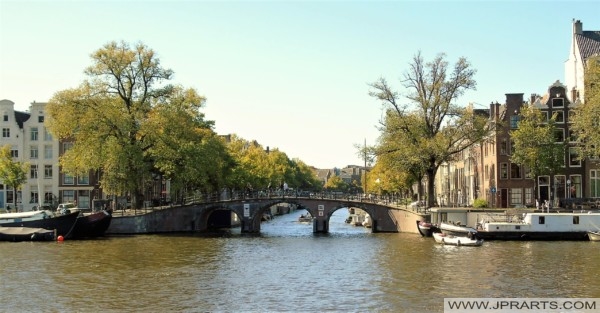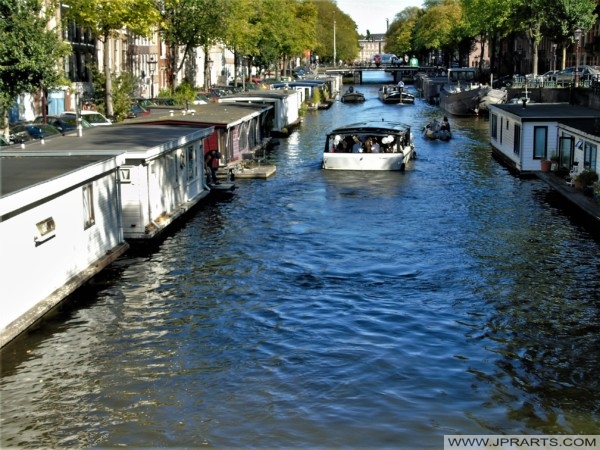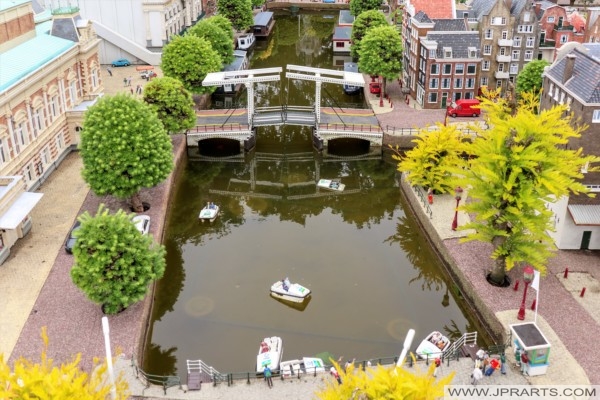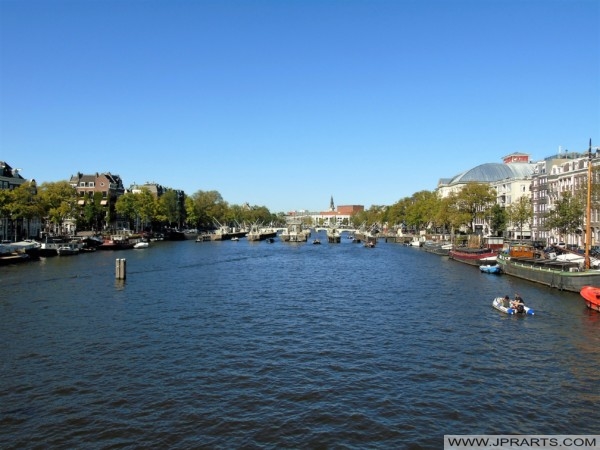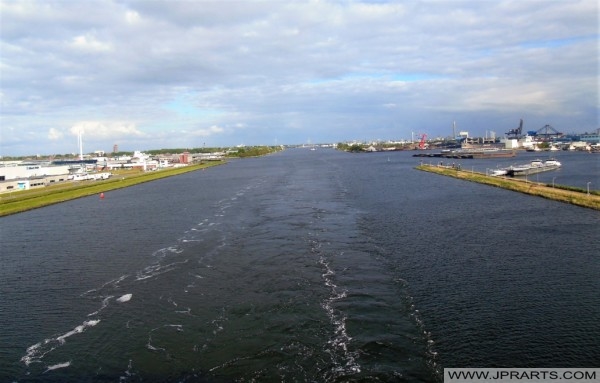The Herengracht is the second of four Amsterdam canals belonging to the canal belt and lies between the Singel and the Keizersgracht. The Gouden Bocht (Golden Bend) in particular is known for its large and beautiful canal houses.
Herengracht (Amsterdam, The Netherlands)
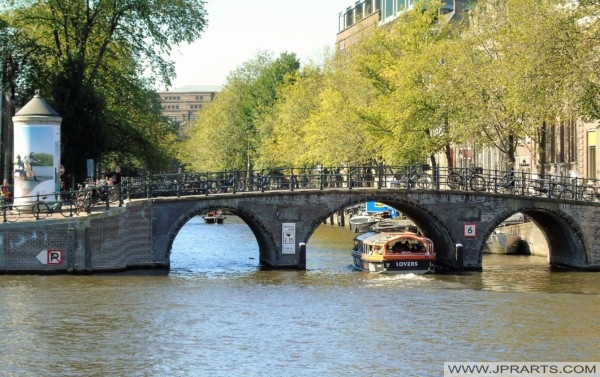
Herrengraben (Amsterdam, Niederlande)
The Herengracht was built starting in 1612 on the initiative of Mayor Frans Hendricksz. Oetgens, city carpenter Hendrick Jacobsz. Staets and city surveyor Lucas Jansz Sinck. Before that it was a moat (dug in 1585) for the companies located behind the Singel. The canal ran within the city wall parallel to the canal outside the city wall. The Herengracht therefore still has a kink at Driekoningenstraat, where the outer moat was routed around a stronghold at that height. When the ditch was widened into the present canal it was given the name Herengracht in 1612, after the Heren Regeerders van de stad Amsterdam (Gentlemen Governors of the city of Amsterdam).
Herengracht (Amsterdam, Países Bajos)
Herengracht(荷兰阿姆斯特丹)
Херенграхт (Амстердам, Нидерланды)
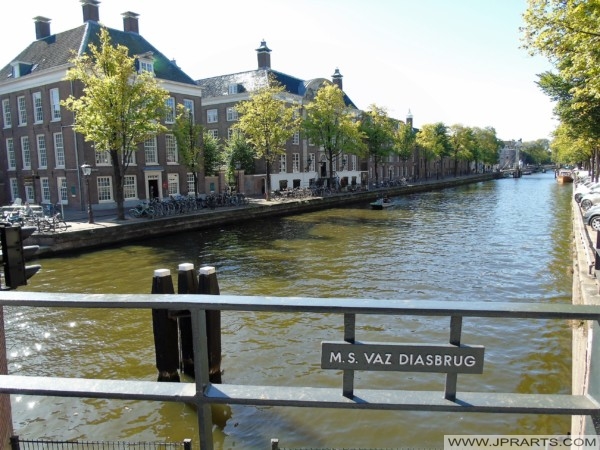
हेरेंग्राच (एम्स्टर्डम, नीदरलैंड)
The part between Leidsegracht and the Binnen Amstel is part of the expansion after 1658. This part contains the Gouden Bocht (Golden Bend), the most prestigious part of the Herengracht. Many of the houses were inhabited here by regents, mayors and traders who earned their fortunes in trade with South America or the Dutch East Indies.
Many buildings were built by the Amsterdam architects Philips Vingboons (1607–78) or Adriaan Dortsman (1635–82). In the last expansion, the section east of the Amstel was laid to the water of the IJ. This last part, located in the prosperous part of Amsterdam’s Jewish quarter, was named Nieuwe Herengracht.
Herengracht (Amsterdam, Nederland)
Herengracht (Amsterdam, Belanda)
Canale dei Signori (Amsterdam, Paesi Bassi)
There are many monumental canal houses on Herengracht, such as:
- 59: De Hond, (The Dog), from 1659.
- 120: De Coningh van Denemarken (The King of Denmark), from 1615.
- 170-172: Bartolotti House, or “Het Bonte Huis”, from around 1617.
- 203: Koopmanshuis, from ± 1618.
- 274: D ‘Witte Leli, from 1739.
- 284: Van Brienen House, from 1728.
- 361: Sonnenberg, from ± 1655.
- 364-370: Cromhouthuizen, from 1660 to 1662
- 394: Vier Heemskinderen, from ± 1671. Named for the legend of The Four Sons of Aymon.
- 432: The former home of pastor Ferdinand Domela Nieuwenhuis.
- 446: Huis van de Graeff, former city palace of Andries de Graeff
- 450: Huis van Deutz, from 1663, house of Andries Adolf Deutz van Assendelft after 1722.
- 462: Sweedenrijk (Sweden), from 1672.
- 476: Huis De Vicq, from 1670.
- 475: Huis De Neufville (Huis aan de Bocht), from 1731 and 1733.
There are also some museums on the Herengracht, such as:
- The Canal House at Herengracht 386.
- The Bijbels Museum at Herengracht 366-368 (in the Cromhouthuizen).
- The KattenKabinet at Herengracht 497.
- The Museum Geelvinck-Hinlopen at Herengracht 518 (entrance: Keizersgracht 633).
- The Museum of Bags and Purses (Tassenmuseum Hendrikje) at Herengracht 573.
- The Museum Willet-Holthuysen at Herengracht 605 with a formal garden adjacent to the Amstelstraat.
- The activities of the Toneelmuseum (formerly in ‘Huis Bartolotti’) have been taken over by the Theater Instituut Nederland (TIN) at Sarphatistraat 53.
Canal des Seigneurs (Amsterdam, Pays-Bas)
Visit Netherlands Travel to Book Flights and Hotels Cheap Online
Click Here for More Photos and Videos

